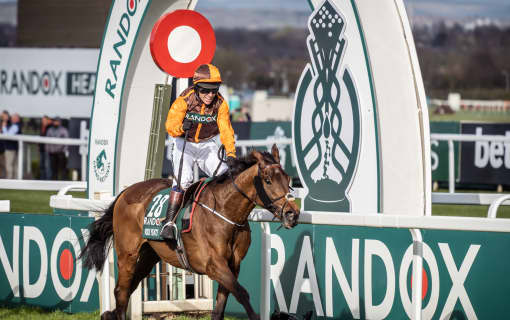For a casual sports fan or a newcomer to horse racing, it may be news that the ‘sport of kings’ is separated into two distinct disciplines – flat racing, and National Hunt or jump racing.
From seasonal variations to the prize money available and even what your average fan might wear to the races, there are some distinct differences between jump racing and flat racing. We’re here to guide you through the key characteristics of each.
DIFFERING COURSES
Several courses offer smoother and more solid grounds conducive to flat racing, while others, like Cheltenham, feature variations in elevation and a significant incline, making them more appropriate for steeplechase events. The two codes of horse racing have distinctive ‘homes’ with Newmarket – the mecca for flat racing, and Lambourn being the hub for many National Hunt or jump racing trainers. Certain racecourses are also famed for hosting one code or the other – for example, Cheltenham, Aintree, and Sandown are notable jump racing courses whereas Epsom, Ascot, Newmarket, and York are renowned for flat racing.
SIZE OF HORSE
Jump horses tend to be larger and more robust, built for stamina and jumping obstacles, whereas flat horses are built for speed and tend to be smaller and more athletic, capable of delivering a surge of speed towards the end of a race. Age is also a factor, with few flat racing horses racing past 8 years old, whereas jump horses regularly race into their early teens.
OBSTACLES
As the name suggests, jump races feature obstacles the horses must clear throughout the course. Hurdles and Chases represent the clearly defined branches within jump racing, and this relates to the type of obstacle the horse must navigate throughout the race. Hurdles tend to be smaller, around 3ft tall, and made of brush panels whereas the fences used in chase races are much larger and range from approx. 4.5ft to the Chair Fence at Aintree which stands at 5ft 3in.
Another variation that can often catch horses out is the addition of a ditch in front of some fences. What this implies is that a participant needs to adeptly cross an open ditch in addition to surmounting the barrier.

COURSE LENGTH
In the UK, flat races vary from quick five-furlong dashes to competitions spanning over two miles. The Queen Alexandra Stakes at Royal Ascot, which stretches over two miles and five-and-a-half furlongs, stands as the lengthiest race of this type on the flat.
On the other hand, 2 miles is the minimum distance for any jump race. Some contests take place over double that, with a handful of races challenging horses over 4 miles! The longest of which is the Grand National, run over four miles, two-and-a-half furlongs.
SEASONAL DIFFERENCES
Although jump races take place throughout the year, the majority of National Hunt races take place in the Autumn and Winter months with the more prestigious meetings taking place between the end of October and the end of April. The softer ground found throughout winter is considered a safer environment for the horses whereas the drier, sounder surface found throughout the summer months is preferable for the speed of flat racing horses. Therefore, whilst flat racing also occurs throughout the year, the season officially starts with the 2000 Guineas at Newmarket until October and Champions Day at Ascot.
DRESS CODE
Given the seasonal variations between jump racing and flat racing, style and fashion differ greatly between the two codes. The summer flat races are all about gladrags and glamour, frocks and fascinators whereas jump races require attire that is much more suited to the seasonal elements. Despite the weather, jump racing provides a perfect catwalk for the fashionistas. Expect tweed and herringbone jackets, fur hats, and of course, the obligatory scarf.
PRIZE MONEY
The prize money for flat racing in the UK tended to be much larger. In recent years, however, the disparity has decreased. The largest prize in UK jump racing is the Grand National with the winner taking home £561,300 whereas the winner of the Epsom Derby will take home a cool £637,988.
Internationally, however, flat racing rules the roost when it comes to prize money. Worldwide, the Saudi Cup boasts the largest prize money with the winner taking home a staggering $10 million. In Europe however the largest winning prize is the $3.2m for the winner of the Prix de l’Arc de Triomphe at Longchamp.

When it comes to racing, it may be surprising to know that there are significant differences between flat racing and jump racing. Each has its own charm, however, and knowing these key differences is a way of appreciating their uniqueness. Browse our horse racing hospitality packages and watch the action in person and in style.








